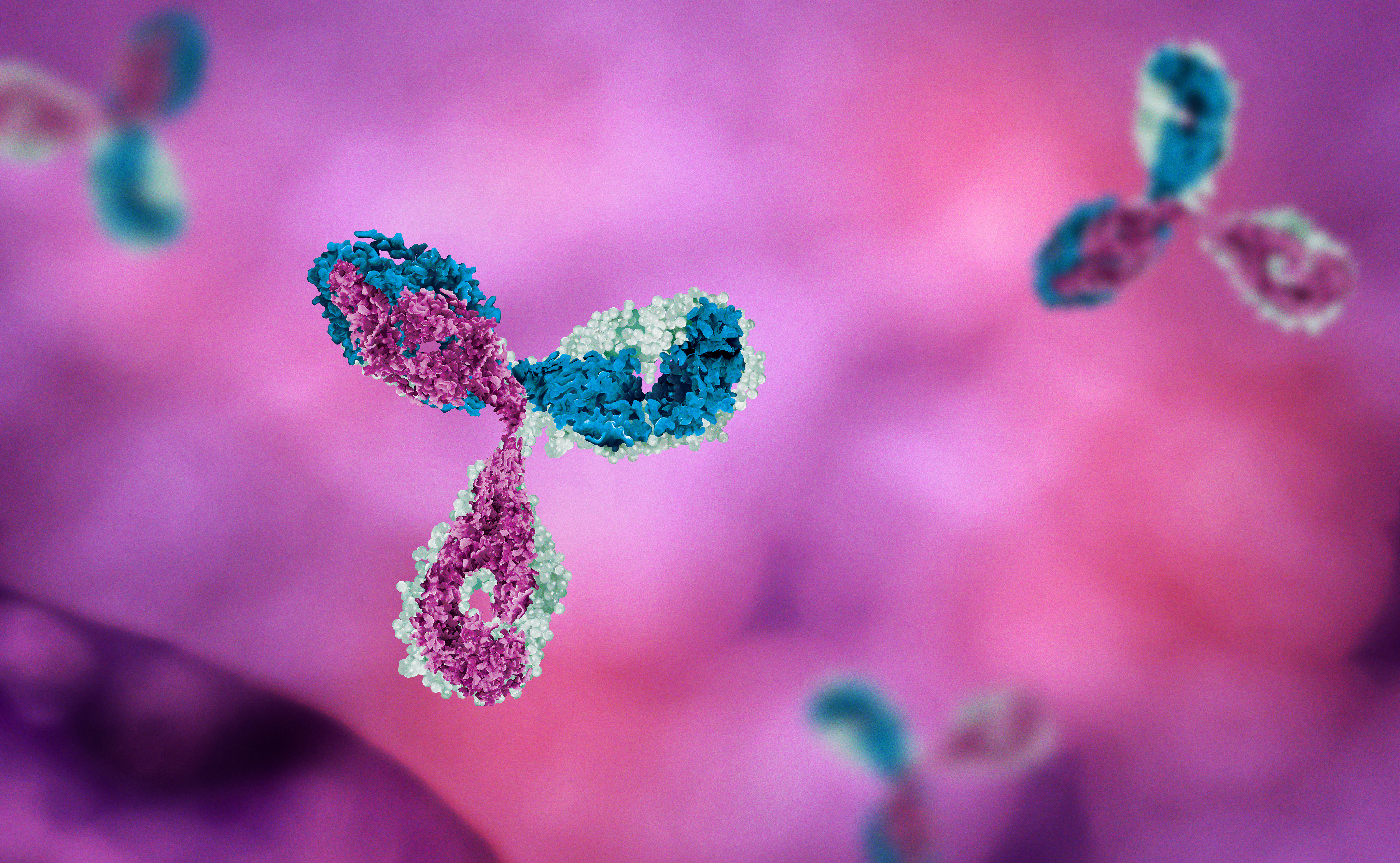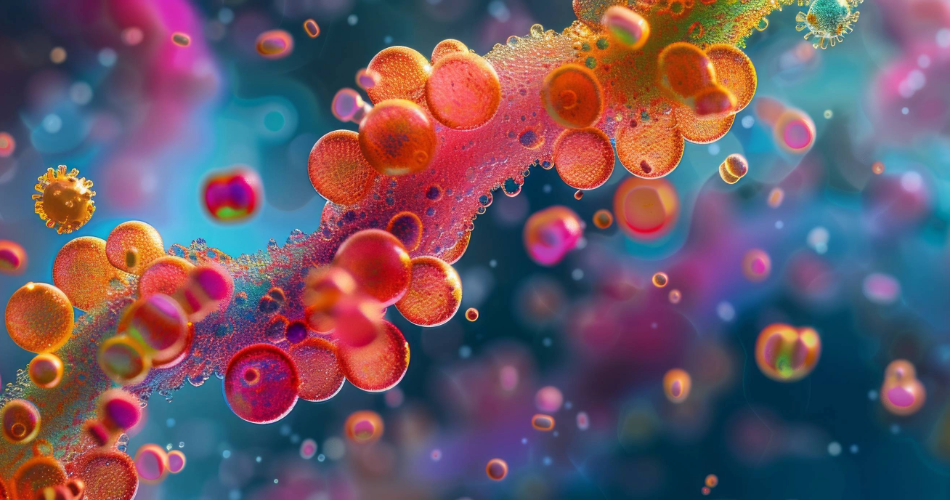
The expert on drugs is researching the potential to treat mental health disorders with psychedelics. ‘Disparate regions in the brain communicate with each other when they don’t normally do so’.
Forward: features are independent pieces written for Mewburn Ellis discussing and celebrating the best of innovation and exploration from the scientific and entrepreneurial worlds.
If any one scientist in the UK can claim the title of rock star, Professor David Nutt is the man. He’s the Edmond J. Safra Professor of Neuropsychopharmacology and head of the Centre for Psychedelic Research in the Division of Brain Sciences at Imperial College London, is nothing less than a giant in the psychedelic sector and is a genuine household name.
The psychedelic renaissance as we know it in the UK – the reputational restoration of a range of powerful molecules long banished from respectable science since the 1970s – simply would not exist if not for him.
In 2016, Professor Nutt’s team conducted the first scans to reveal what happens inside the brain under the influence of LSD (70 years after the molecule’s creation). Over the past decade, he has spearheaded the movement to allow British children and the disabled to access safe cannabis medications. In 2021, he opened Awakn, the first clinic in the UK to provide safe access to psychedelics for intractable depression, without question saving lives. He has brought to market the botanical drink Sentia, one of the first true alternatives to alcohol, and plans to roll out more.

Professor David Nutt
Yet he might still be best known for being fired by the British government in 2009 from his position as chair of the Advisory Council on the Misuse of Drugs (ACMD) – known as the Drugs Tsar after the publication of a controversial 2009 article in The Journal of Psychopharmacology in which he compared the dangers of consuming MDMA with horse riding, with the deliberately provocative title ‘Equasy – An overlooked addiction with implications for the current debate on drug harms’.
Clearly the infamous sacking has not stymied Nutt’s rise. Any attempts to dissuade him from speaking his mind clearly backfired as he has only grown in influence and prestige, largely thanks to the public spat with the infamous government sacking.
‘I tried to change politics and I failed. But at least I already knew that you can change people’s brains,’ he says.
Because, in fact, although he’d brought a model of the LSD molecule model to school as a boy (‘I am indeed a child of the 60s’), Nutt only came to study psychedelics in a serious way late in his career. The first time I met him in 2012 we barely spoke about psychedelics or equasy at all (unsurprising as he was clearly weary of discussing horses and MDMA) and instead spent most of our time discussing an entirely different condition: epilepsy.
His mission
I have a minor form of the condition and had just got over a nasty experience with a drug called Lamotrigine, which harmed me worse than any boozy weekend ever did. Nutt, as it turned out, had written his PhD on epilepsy in 1979 and embarked on a quest to find drugs that could induce seizures in the same manner as electroconvulsive therapy (ECT), which is actually an effective treatment for severe depression: strangely, by inducing seizures ECT can promote ‘neurogenesis’ (the formation of new brain cells) and ‘synaptogenesis’ (new connections between brain cells).
In the process of attempting to design drugs that could induce the same effects, his work led him to open the first dedicated clinics for a range of disorders: anxiety (1989), insomnia (1994) and ADHD (1998), all in Bristol.
‘Really I wanted to just help people who weren’t getting a fair crack of the whip from the NHS,’ he explains. ‘You couldn’t get doctors to refer patients with anxiety issues, for example, because nobody seemed to know anything about anxiety. So I just had to set it up myself. You cannot imagine the level of disability in these patients. I dealt with many people who were so anxious and agoraphobic I had to visit them in their own homes. This was a very serious and under-served condition.’
Possibly counterintuitively, there is a unifying factor in sleep, seizures and anxiety: the neurotransmitter GABA, which seems to be at unusually high or unusually low levels in these conditions.
‘Pretty much my entire career has been spent at the interface of psychiatry and understanding the brain mechanisms of drugs, usually with a focus on GABA,’ he explains.
After his sacking the chance came up to run his own lab at Imperial in 2009.
‘Moving to London to work with some of the best brain scanners in the country was a natural move. It was an opportunity I just could not refuse,’ he says.
At Imperial he now leads the UK’s largest psychedelic research department (there are only four universities licensed to study these drugs) with 15 staff churning out cutting-edge research involving scientific feats never accomplished before: examining the influence of illegal drugs at the finest detail right inside the brain.
‘Which is exactly why I went into medicine in the first place: I wanted to study the brain,’ says Nutt.
What can hallucinogens achieve?
Under his guidance, Imperial’s researchers have dosed people with class A drugs such as psilocybin – the active ingredient in magic mushrooms – and LSD, and measured not only their psychological responses, but also their neurological responses (extremely expensive and difficult by comparison). For this, they deploy some of the most powerful MRI scanners in the country to truly see what is going on.
Their first milestone paper, published in the prestigious journal the Proceedings of the National Academy of Sciences (PNAS, one of the most cited journals in the world) in 2012 used functional magnetic resonance imaging (fMRI) to measure the flow of blood to various brain regions. It found that the ‘default mode network’ (DMN) constellation of brain regions receives less blood, not more, which to the researchers came somewhat as a surprise, as many had expected that drugs that make one hallucinate or experience synaesthetic phenomena do so by pumping more blood into the brain, not less. But the discovery that the DMN receives less blood under the influence of a psychedelic actually makes sense: it explains why people experience less ruminative thoughts, less constrained thinking – less of the circular and negative thought patterns that accompany depression – when under the influence of magic mushrooms. This also helps to explain the phenomenon of ‘ego dissolution’, the same sensation often reported by experienced meditators: less focused on oneself, more ‘at one with the universe’, so to speak.
It is exactly this kind of evidence that is needed to bring these molecules to market.
‘We need the brain scans to show the pinnacle potential of these drugs,’ says Nutt. Anecdotal evidence is not enough – demonstrating the nuts and bolts underpinning their mechanisms is crucial.
Four years later, in 2016, his team published a related study in PNAS revealing what actually happens in the brain when people take LSD. The world had waited over seven decades for this. Although the psychedelic, first created in 1938 and then first sampled by chemist Albert Hoffman in 1943, was studied by thousands of psychiatrists with great fascination throughout the 1950s and 1960s when it was still legal, all legit research on humans ground to a halt in 1971 when governments banned them in a wave of hysteria. Now that regulations are thawing, scientists such as Nutt can use modern tools to examine the drugs in ways that post-war researchers might never have imagined possible.
When Nutt and his team could finally look at how LSD influences the brain, what they discovered came as no surprise to anyone: the drug increases the ‘functional connectivity’ between different parts of the brain. ‘Disparate regions in the brain communicate with each other when they don’t normally do so,’ he explains. This helps us understand how so many things may seem imbued with meaning during an acid trip – meaning that truly can bring insights.
This 2016 PNAS study on LSD was in ‘healthy volunteers’ – the real game changer came in 2021 with a ground-breaking study on using psilocybin to treat depression published in the esteemed New England Journal of Medicine in 2021, in which patients with ‘treatment-resistant depression’ (meaning they had tried multiple anti-depressants to no avail) were given either psilocybin or escitalopram (an SSRI) along with psychotherapy. The statistical analysis found psilocybin in combination with therapy was just as effective as the antidepressant, but, unlike the SSRI, it didn’t come with the weight gain, numbed emotions and dampened libido that frequently caused people to drop their prescriptions.
Other risk factors remain with psychedelics, such as the possibility of inducing psychosis in patients with unidentified predispositions such as genetic risk factors for schizophrenia or a history of childhood trauma. However, given how many people fail to experience any relief from depression with conventional drugs, and the downsides of years spent on daily medications, this study suggests the possible benefits of psilocybin therapies for mental health – which still have not been approved in the UK or the US – merit further study.
Next up for the Centre for Psychedelic Research: exploring if psilocybin could be used to treat anorexia and other eating disorders, which are among the most lethal of all mental health conditions. A shocking 15% of patients with severe eating disorders are estimated to die from their affliction, so any new treatments will save millions of lives. After Nutt and I spoke, that evening he was set to host a meeting with researchers in New Zealand, the US, and the UK all gathering at the same time to look at the data from their clinical trial for the very first time.
‘And absolutely nothing beats going over new data for the very first time – that really is the most exciting thing in the world,’ he says.
The new frontiers
Nutt plans to begin this year a new research programme to examine if psilocybin could be used to treat gambling and opioid addictions, which would be a truly paradigm-altering study: zero drugs currently exist to treat gambling addictions and few for opioid addiction.
‘I think psilocybin will work for them, because I don’t think that psychedelics work like other drugs. I think they work not to modulate single neurotransmitters like SSRIs, but to disrupt brain circuits,’ he explains. ‘This is a whole different concept to other drug treatments.’
Given the enormous potential for these molecules to save people’s lives, and given that we’ve known about their promise since early studies using psychedelics for trauma, alcoholism, depression and more in the 1950s, researchers are near universal in agreement that the restrictions placed on clinical studies with psychedelics and numerous excessive costs are inappropriate and should be re-examined.
‘We are held back terribly by legal constraints,’ sighs Nutt. ‘There are studies we cannot do because of the law. We cannot do microdosing studies, for example, because of the complexities of the legislation. People have to come into a hospital to be administered a drug, so it’s not possible for us to do this with microdosing because of the complexities of handling, holding and looking after the patients. We should have an exemption for research.’
Some of the practical safeguards required by legislation are just comedic, he says.
‘You have to have a special safe in which to store MDMA and psilocybin – why? Why can’t you put them in the same hospital safe alongside hospital-grade heroin?’ he asks. ‘The law is absurd. It creates vast amounts of complexities. Universities can’t be bothered because of the amount of money it winds up costing. It all just scares people. They say the rules are designed to prevent recreational use, but I haven’t heard of any psychedelic ever leaking out from a research lab into recreational use. We’re never going to let these drugs leak out – it’s too important to us to keep our work going.’
Ultimately, is he optimistic that he will be able to bring these drugs to market?
‘It’s been 30 years since anyone has brought a proven new psychiatric medicine to market,’ Nutt flatly summarises. ‘But all this hassle is so unnecessary – hopefully that will change if the FDA in America ultimately decides to approve MDMA, and if the startup Compass gets approval for its patented form of psilocybin.’
And what about new molecular analogues to the ‘classic’ psychedelics? Throughout the psychedelic industry, every startup is focused on developing a new formulation of the traditional psychedelics, which they can patent and therefore use to raise funding for proprietary and exclusive development. Is this necessary?
‘No,’ he says flatly. The entire field exists due to the traditional molecules, why do we need new ones?
There is, however, one arena in which new compounds are desperately needed and it is this: alcohol.
For the past decade, Nutt and his business partners have been working to develop alternatives to alcohol, which Nutt argues is one of the deadliest drugs in the world – we just don’t think of it as one. His synthetic alternative aims to give drinkers the same buzzy feeling, but without liver damage, carcinogenicity or the capacity to render people completely blind intoxicated.
The name for his startup? GABA Labs, going right back to his roots. Already it has released the botanical drink Sentia. The next step, to popularise a true modern alternative to humanity’s oldest intoxicant.
A new frontier in neuropharmacology
Joseph Newcombe, Associate and Patent Attorney at Mewburn Ellis, comments:
"Understanding how psychedelics elicit their profound effects on the human psyche is truly fascinating. These long known, but (until now) poorly studied psychoactive compounds are at a new frontier in neuropharmacology and, more importantly, could represent a gateway to therapy for some of the most difficult to treat psychiatric disorders like PTSD, treatment resistant depression, and severe eating disorders. Despite being caught in a political quagmire, the field of psychedelics research is undergoing a renaissance, and it is a privilege to hear from arguably one of the most influential characters in this space."
Written by Zoe Cormier
Joseph is a patent attorney working in the chemistry and materials field assisting in the drafting and prosecution of UK and European patents. He also has experience in opposition and appeal proceedings before the EPO and the management of national/regional phase entry of international patent applications.
Email: joseph.newcombe@mewburn.com
Sign up to our newsletter: Forward - news, insights and features
Our people
Our IP specialists work at all stage of the IP life cycle and provide strategic advice about patent, trade mark and registered designs, as well as any IP-related disputes and legal and commercial requirements.
Our peopleContact Us
We have an easily-accessible office in central London, as well as a number of regional offices throughout the UK and an office in Munich, Germany. We’d love to hear from you, so please get in touch.
Get in touch

